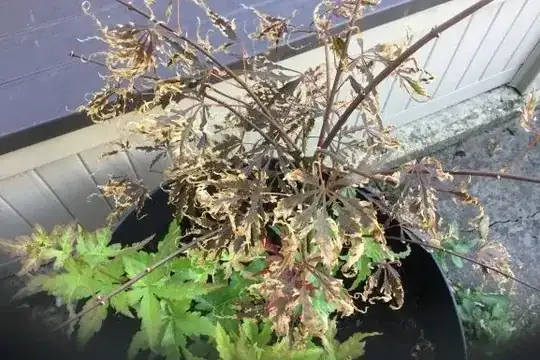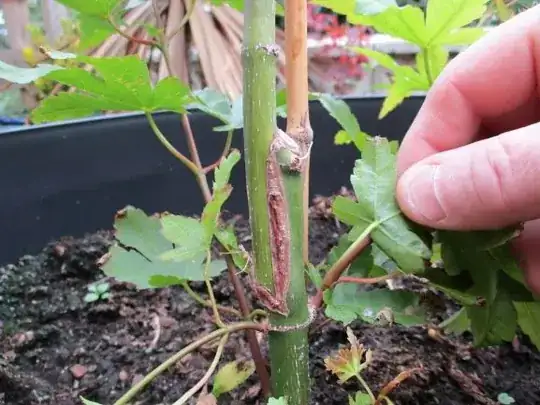It looks like it has been grafted & the top is dead but the bit it was grafted onto is thriving. The supplier says it wasn't grafted. The new leaves look very different to the plant I bought and it is Crimson Queen variety which had very purple leaves. I googled it to see if the leaves change colour throughout the seasons but apparently not.
I have bought two, positioned in different places in the garden so it's not wind or sun that's caused this.
Whats happening to it, please?
Update: After looking again (with my glasses on this time) I can now clearly see where it has been grafted, thanks for all your replies. I will return both for a refund.

